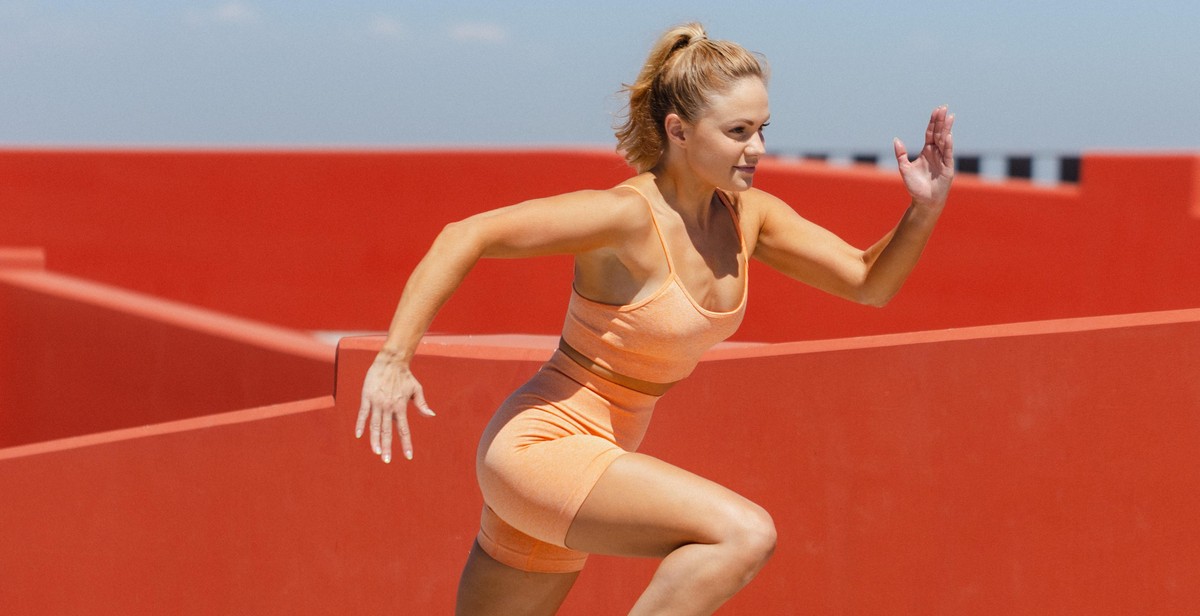Introduction: How to Capture Sports Photography: Freezing Action and Emotion
Sports photography is one of the most challenging and rewarding genres of photography. Capturing the perfect moment of a sporting event requires more than just a good camera and lens. It takes skill, knowledge, and experience to freeze the action and capture the emotion of the moment.
Why Sports Photography is Challenging
Sports photography is challenging because it requires the photographer to be able to anticipate the action and capture it at the right moment. The lighting conditions are often difficult, with fast-moving subjects in low light or harsh sunlight. The photographer must also be able to work quickly and efficiently, as the action happens fast and can change in an instant.
What Makes a Great Sports Photo
A great sports photo captures the emotion of the moment and tells a story. It freezes the action in a way that makes the viewer feel like they are part of the event. A great sports photo also has good composition, lighting, and focus. The subject should be sharp and in focus, with a clean background that doesn’t distract from the action.
Whether you are a professional photographer or a hobbyist, capturing sports photography can be a challenging and rewarding experience. In this article, we will provide tips and tricks for freezing the action and capturing the emotion of the moment in sports photography.

Equipment Needed for Sports Photography
Sports photography requires specific equipment to capture the action and emotion of the athletes. Here are the essential pieces of equipment you will need:
Camera
A camera with a fast shutter speed is essential for capturing the fast-paced action of sports. Look for a camera with a minimum of 1/1000th of a second shutter speed. A DSLR camera is the most popular choice for sports photography because of its fast autofocus and ability to shoot in burst mode. Mirrorless cameras are also a good option, especially for those who prefer a lighter and more compact camera.
Lenses
When it comes to lenses, a telephoto lens with a focal length of at least 200mm is necessary for capturing athletes from a distance. A zoom lens can be useful for changing focal lengths quickly, but a prime lens with a wide aperture of f/2.8 or wider will provide better image quality and allow for faster shutter speeds. A lens with image stabilization can also be helpful in reducing blur caused by camera shake.
Tripod or Monopod
A tripod or monopod can help stabilize your camera and lens and prevent camera shake. A monopod is a good option for sports photographers who need to move around quickly and capture action from different angles. A tripod is more stable but can be bulky and difficult to move around quickly.
Memory Cards
You will need plenty of memory cards to capture all the action of a sports event. Look for high-speed memory cards with a minimum of 32GB of storage. It’s also a good idea to bring multiple memory cards so you can switch them out as needed.
Batteries
Make sure to bring extra batteries for your camera, as sports events can last for several hours. It’s also a good idea to bring a battery charger so you can recharge your batteries during breaks in the action.

Settings for Freezing Action
Freezing action is crucial in sports photography as it captures the athletes at their peak performance, showcasing their strength and agility. To achieve this, you need to use fast shutter speeds, a low ISO, and a wide aperture.
Shutter Speed
Shutter speed is the most critical factor in freezing action. The faster the shutter speed, the more you can freeze motion. The ideal shutter speed for sports photography varies depending on the sport and the level of action. Generally, a shutter speed of 1/1000th of a second or faster is recommended for high-speed sports like track and field, while a speed of 1/500th of a second is suitable for sports with less movement like golf.
ISO
ISO determines the camera’s sensitivity to light. In sports photography, you need to use a low ISO to reduce noise and capture sharp images. An ISO of 100 to 400 is ideal for outdoor sports in bright light, while an ISO of 800 to 1600 is suitable for indoor sports or low light situations.
Aperture
Aperture controls the amount of light entering the camera and affects the depth of field. A wide aperture (low f-number) allows more light and creates a shallow depth of field, which can isolate the subject from the background. However, a shallow depth of field can make it challenging to keep the subject in focus and capture the action. A moderate aperture (f/5.6 to f/8) is recommended for sports photography, allowing enough light and depth of field to capture the action while keeping the subject in focus.
Using the right settings for freezing action will help you capture sharp and dynamic sports photos that convey the athlete’s emotions and energy.

Capturing Emotion in Sports Photography
Sports photography is not just about freezing the action, it’s also about capturing the emotion of the moment. Whether it’s the joy of victory or the agony of defeat, emotions are an integral part of sports photography. Here are some tips for capturing emotion in your sports photography:
Anticipation
Anticipation is key to capturing emotion in sports photography. You need to be able to anticipate the moment and be ready to capture it as it happens. Pay attention to the players’ body language and facial expressions. If you can anticipate the moment when they are about to celebrate or react to a play, you’ll be able to capture the emotion of the moment.
Timing
Timing is crucial in sports photography. You need to be able to capture the moment when the emotion is at its peak. This means you need to be prepared to shoot continuously and be ready to press the shutter button at the right moment. Don’t be afraid to take multiple shots of the same moment to ensure you capture the emotion at its peak.
Composition
Composition is important in all types of photography, and sports photography is no exception. Pay attention to the composition of your shots and try to frame the players in a way that emphasizes the emotion of the moment. For example, if a player is celebrating a goal, try to frame them with their arms raised in victory, with the crowd in the background.
Using Light
Lighting can play a big role in capturing emotion in sports photography. Try to use light to your advantage by positioning yourself in a way that maximizes the available light. For example, if the sun is setting behind the players, position yourself so that you can capture the silhouettes of the players against the colorful sky. This can create a dramatic and emotional image.
- Anticipate the moment to capture emotion
- Timing is crucial to capture emotion at its peak
- Pay attention to composition to emphasize emotion
- Use light to create dramatic and emotional images

Tips for Shooting Different Sports
Football
Football is a fast-paced sport with a lot of action happening at once. To capture the best shots, try to anticipate the action and position yourself accordingly. Use a fast shutter speed to freeze the motion and a telephoto lens to get close-up shots of the players. Keep an eye out for emotional moments, such as a touchdown celebration or a player’s reaction to a missed opportunity.
Basketball
Basketball games can be challenging to shoot due to the fast pace and constant movement of the players. To capture the best shots, position yourself near the key areas of the court, such as the basket or the sidelines. Use a fast shutter speed to freeze the action and a wide aperture to blur the background and make the players stand out. Look for opportunities to capture dramatic moments, such as a slam dunk or a player’s reaction to a foul.
Baseball
Baseball games offer a lot of opportunities for great shots, from close-ups of the pitcher to wide shots of the entire field. Use a telephoto lens to get close-ups of the players and a wide aperture to blur the background and make the players stand out. Look for opportunities to capture the emotion of the game, such as a player’s reaction to a home run or a close call at the plate.
Soccer
Soccer games can be challenging to shoot due to the large field and fast pace of the game. To capture the best shots, position yourself near the goal or the sidelines. Use a fast shutter speed to freeze the action and a telephoto lens to get close-ups of the players. Look for opportunities to capture the emotion of the game, such as a player’s reaction to a goal or a missed opportunity.
Tennis
Tennis matches offer a lot of opportunities for great shots, from close-ups of the players to wide shots of the entire court. Use a telephoto lens to get close-ups of the players and a wide aperture to blur the background and make the players stand out. Look for opportunities to capture the emotion of the game, such as a player’s reaction to a great shot or a missed opportunity.
Remember, the key to capturing great sports photography is to anticipate the action, position yourself accordingly, and be ready to capture the emotion of the game.

Conclusion
Capturing sports photography is an art that requires skill, patience, and practice. With the right techniques and equipment, you can freeze action and emotion to create stunning images that tell a story. Remember that practice makes perfect, and the more you shoot, the better you will become.
Have Fun
While it is important to take your craft seriously, don’t forget to have fun. Sports photography is an exciting and dynamic field, and there is always something new to learn and discover. Enjoy the process and embrace the challenges that come your way.
Experiment
Don’t be afraid to try new things and experiment with different techniques. Play with shutter speed and aperture settings to create unique and creative images. Use different lenses and angles to capture the action from different perspectives. The possibilities are endless, so don’t be afraid to push your boundaries.
- Remember to always be respectful of the athletes and the game.
- Be prepared for any situation by bringing extra batteries, memory cards, and lenses.
- Keep your focus on the action and anticipate the moments before they happen.
With these tips in mind, you can take your sports photography to the next level and capture the excitement and emotion of the game.
| Practice Makes Perfect | Have Fun | Experiment |
|---|---|---|
| Keep shooting and practicing to improve your skills. | Enjoy the process and embrace the challenges. | Try new things and push your boundaries. |
